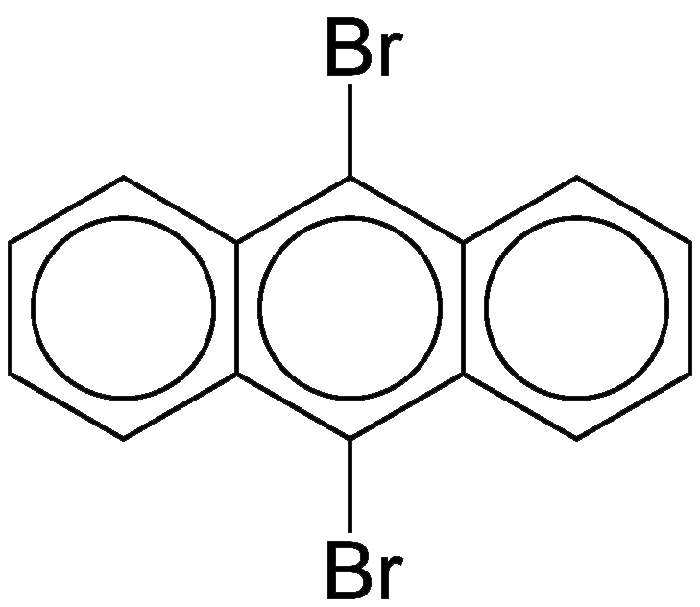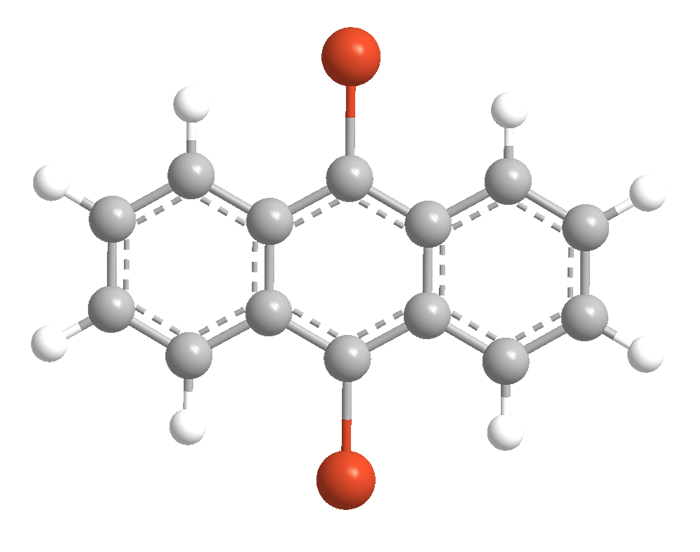What molecule am I?


9,10-Dibromoanthracene is an aryl dihalide that until recently had no noteworthy properties or uses. It was first synthesized in 1923 by Ian (formerly Isidor) M. Heilbron and John S. Heaton, chemists working at the University of Liverpool. The molecule forms an addition compound with the explosive 1,3,5-trinitrobenzene.
But early this year, Leo Gross and colleagues at IBM Research Zurich and the University of Santiago de Compostela (Spain) used 9,10-dibromoanthracene to demonstrate that a chemical reaction can be observed at the molecular level. They combined scanning tunneling microscopy (STM) and atomic force microscopy to watch voltage pulses from an STM probe break one C–Br bond to form a free radical and then the second bond to form a diradical. Another pulse converted the diradical to a bicyclic diene–diyne.
The researchers also showed that their procedure can be used to reverse the last reaction to re-form the diradical. Chemists who study reaction intermediates hail this study as a breakthrough for directly observing chemical bonding changes in a reaction.
MOTW Update
L-Tyrosine, the Molecule of the Week for July 13, 2015, is in the news again. Scientists at Cornell University and the University of Wisconsin–Madison showed that medically useful isoquinolines, formerly thought to be biosynthesized only by plants, can be made by a fungus. Aspergillus fumigatus uses the amino acid as the starting material to synthesize a variety of the heterocyclic molecules. The fungus and plant mechanisms are similar but evolutionarily independent.

Learn more about this molecule from CAS, the most authoritative and comprehensive source for chemical information.
Molecule of the Week needs your suggestions!
If your favorite molecule is not in our archive, please send us a message. The molecule can be notable for its current or historical importance or for any quirky reason. Thank you!
Stay Ahead of the Chemistry Curve
Learn how ACS can help you stay ahead in the world of chemistry.

